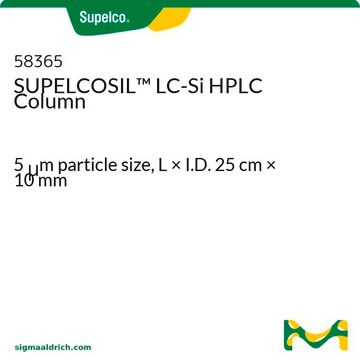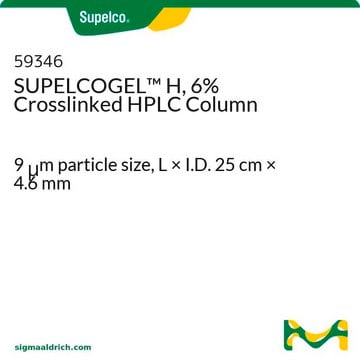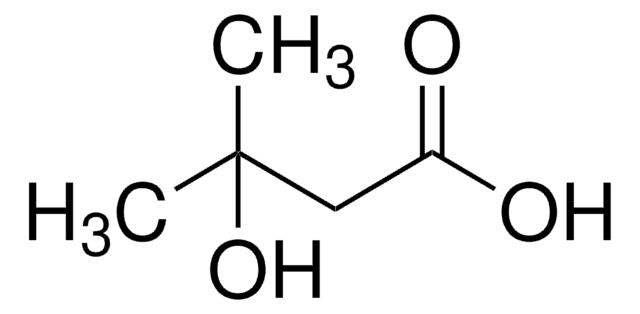59247-U
SUPELCOGEL™ 8Ca (9 µm) HPLC Columns
L × I.D. 30 cm × 7.8 mm
Synonim(y):
SUPELCOGEL™ 8% Crosslinked HPLC Column
About This Item
Polecane produkty
product name
SUPELCOGEL™ 8Ca, 8% Crosslinked HPLC Column, 9 μm particle size, L × I.D. 30 cm × 7.8 mm
Materiały
stainless steel column
Poziom jakości
agency
suitable for USP L19
linia produktu
SUPELCOGEL™
Właściwości
endcapped: no
producent / nazwa handlowa
SUPELCOGEL™
opakowanie
1 ea of
Parametry
400 bar pressure (5801 psi)
85 °C max. temp.
metody
HPLC: suitable
dł. × śr. wewn.
30 cm × 7.8 mm
macierz
sulfonated polystyrene/divinylbenzene, spherical
polymeric
wielkość cząstki
9 μm
metoda separacji
ligand exchange
Szukasz podobnych produktów? Odwiedź Przewodnik dotyczący porównywania produktów
Powiązane kategorie
Opis ogólny
The majority of columns on the market for the analysis of carbohydrates, organic acids, and alcohols, such as Aminex®, utilize an 8% XL PS-DVB. The 8% polymer offers excellent separation of many common samples.
Advantages: 8% polymers combine durability and good resolution. Due to higher cross-linking than 6% XL polymers, columns packed with 8% polymer can be used at higher flow rates therefore decreasing analysis times.
Disadvantages: 8% polymers are limited in separating carbohydrates larger than trisaccharides due to lower MW exclusion limits. Compared to the 6% XL polymer, for some types of carbohydrate and organic acid mixtures, the 8% shows less resolution due to selectivity differences.
Molecular Weight Exclusion Limit: 1200
Minimum Wet Capacity meq/ml: 1.7 - 1.9
Flow Rate Recommendation: 0.4 - 1.2 ml/min
Informacje prawne
prekolumna
Choose from one of the most recent versions:
Certyfikaty analizy (CoA)
Sorry, we don't have COAs for this product available online at this time.
If you need assistance, please contact Obsługa Klienta
Masz już ten produkt?
Dokumenty związane z niedawno zakupionymi produktami zostały zamieszczone w Bibliotece dokumentów.
Klienci oglądali również te produkty
Nasz zespół naukowców ma doświadczenie we wszystkich obszarach badań, w tym w naukach przyrodniczych, materiałoznawstwie, syntezie chemicznej, chromatografii, analityce i wielu innych dziedzinach.
Skontaktuj się z zespołem ds. pomocy technicznej






